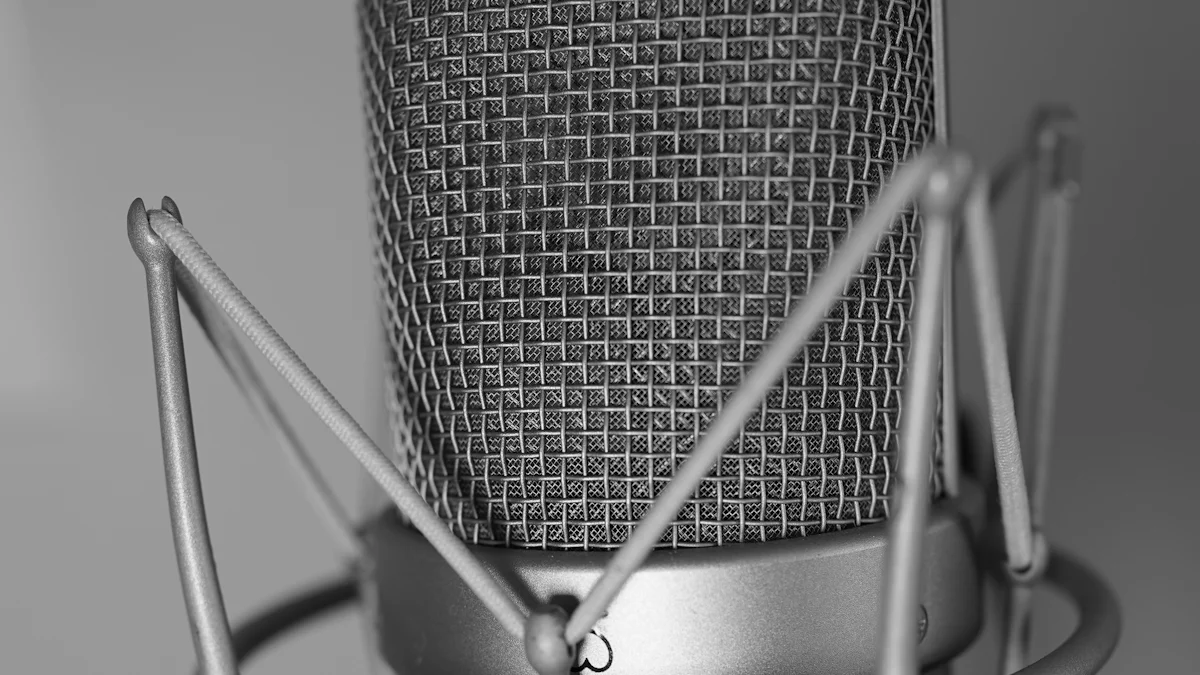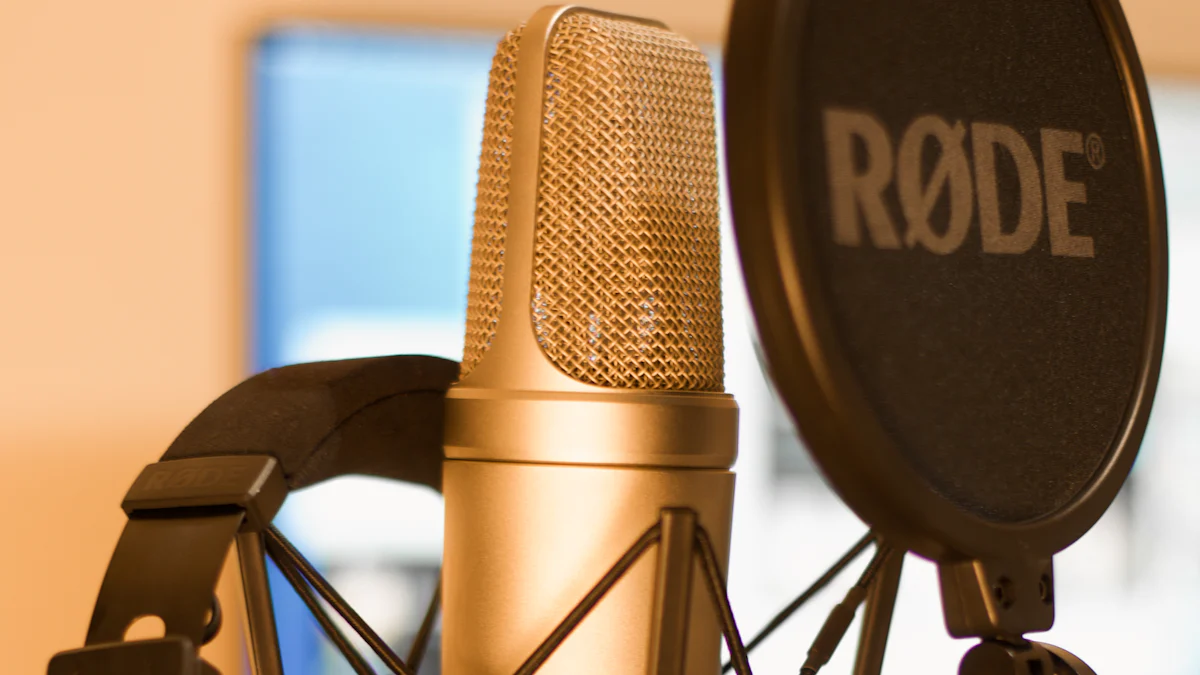How to Optimize Noise-Cancelling Mics for Clearer Calls

In today's fast-paced world, clear communication is crucial, whether you're in a bustling office or working from the comfort of your home. Optimizing your noise-cancelling mic for headsets designed for office and home calls can make a world of difference. These microphones significantly enhance audio quality by reducing unwanted background noise, allowing you to communicate without distractions. You'll enjoy benefits like better communication, reduced listening fatigue, and enhanced privacy. With practical tips and solutions, you can ensure your calls are as clear as possible, making every conversation more effective and enjoyable.
Understanding Noise Cancellation

Noise cancellation technology has revolutionized how you experience sound, especially in environments filled with unwanted noise. Let's dive into the basics and understand how it impacts your calls.
Basics of Active Noise Cancellation
Active noise cancellation (ANC) is a game-changer in audio technology. It uses microphones and speakers to reduce or eliminate unwanted noise by generating opposing sound waves. This technology is particularly effective in noisy environments, allowing you to focus on the conversation without distractions. ANC earbuds and headsets are designed to fit snugly in your ear canal, enhancing the noise-cancelling effect. The silicone ear tips play a crucial role here, as they help create a seal that blocks out external noise. By understanding how ANC works, you can achieve better noise cancellation and enjoy clearer calls.
Impact of Noise Cancellation on Call Quality
Noise cancellation significantly improves call quality. When you use a noise-cancelling mic for headsets designed for office and home calls, you reduce background noise, making your voice clearer to the listener.
Common Issues with Noise-Cancelling Mics for Headsets Designed for Office and Home Calls
Despite its benefits, noise cancellation can sometimes present challenges. One common issue is the improper fit of earbuds or headsets, which can compromise noise cancellation performance. Ensuring that your ear tips fit well in your ear canal is essential for optimal results. Another challenge is the occasional interference from digital noise, which can affect call quality. To address these issues, consider these tips:
- Adjust the Fit: Make sure your earbuds or headset fit snugly in your ear. Silicone ear tips can help achieve a better seal.
- Check for Software Updates: Regular updates can improve digital noise cancellation and overall performance.
- Experiment with Settings: Some devices allow you to adjust ANC levels. Find the setting that works best for your environment.
By following these tips, you can overcome common issues and enjoy the full benefits of noise cancellation technology.
Practical Tips for Optimizing Microphone Settings
Adjusting Microphone Sensitivity for Optimal Sound
Getting the best sound from your noise-cancelling mic involves tweaking its sensitivity. You want your microphone to pick up your voice clearly without capturing unwanted background noise. Start by adjusting the microphone volume or gain. This setting ensures that your mic focuses on your voice and not on other sounds around you.
"Adjusting microphone volume/gain so it only picks up your voice, not speaker sounds."
Experimentation is key here. Try different settings and listen to recordings of your voice. This way, you can find the sweet spot where your voice sounds clear and natural. Don't hesitate to play around with noise suppression, EQ, compression, and a limiter. These filters can significantly enhance your audio quality. Remember, the perfect settings depend on your voice, microphone, and environment.
Proper Positioning of Noise-Cancelling Mics for Headsets Designed for Office and Home Calls
Where you place your microphone matters a lot. Ideally, keep it about 3-5 inches from your mouth. This distance helps the mic capture your voice clearly without distortion. If the mic is too far, it struggles to pick up your voice. Too close, and it might distort the sound.
"How far away you place your microphone will have a noticeable impact on sound quality."
Align the microphone with your mouth. Avoid placing it too high or too low, as this can lead to picking up background noise instead of your voice. Recording yourself speaking at various distances can help you find the best placement. Listen to the audio clips and choose the one that sounds the clearest.
"Don't be afraid to experiment! To find the best microphone placement, record yourself speaking at various distances."
By following these tips, you can optimize your microphone settings for clearer calls. Whether you're in a busy office or a quiet home, these adjustments ensure your voice comes through loud and clear.
Environmental Factors and Noise Cancellation

Environmental factors play a significant role in how effectively your noise-cancelling mic performs. By understanding and managing these factors, you can improve noise cancellation and ensure clearer calls.
Minimizing Noise and Enhancing Noise Isolation
To achieve optimal noise cancellation, you need to focus on minimizing external noise and enhancing noise isolation. Passive noise isolation is your first line of defense. It relies on the physical design of your headset, such as dense padding and snug-fitting ear tips, to block out unwanted sounds. This method is particularly effective in reducing incidental noises that active noise cancellation might miss.
- Choose the Right Fit: Ensure your headset fits well. A proper seal enhances passive noise isolation, reducing ambient noise significantly.
- Use Physical Barriers: In your workspace, consider using sound-absorbing materials like curtains or carpets. These materials help in converting sound waves into heat, thus reducing noise transfer.
- Combine Technologies: Use both active and passive noise control methods. While active noise cancellation generates opposing sound waves to cancel out noise, passive methods prevent noise from entering in the first place.
By combining these techniques, you can create an environment that supports effective noise cancellation, allowing you to focus on your calls without distractions.
Managing Echo and Reverberation in Different Environments
Echo and reverberation can affect call quality, especially when you phone remotely from different environments. These issues arise when sound waves bounce off hard surfaces, creating a lingering effect that can muddle your voice.
- Soft Furnishings: Incorporate soft furnishings like cushions and rugs in your workspace. These items absorb sound, reducing echo and reverberation.
- Strategic Placement: Position your microphone away from walls and other reflective surfaces. This placement minimizes the chances of sound waves bouncing back into the mic.
- Review Your Environment: Regularly review your surroundings to identify potential sources of echo. Adjust your setup accordingly to maintain clear communication.
By addressing these environmental factors, you can improve noise cancellation and ensure your voice remains clear and distinct during calls. Whether you're in a bustling office or phoning remotely from home, these strategies will help you maintain high-quality communication.
Enhancing Microphone Functionality with Software and Firmware
In the quest for clearer calls, software and firmware updates play a pivotal role. They can significantly enhance the functionality of your noise-cancelling microphone. Let's explore how these updates and tools can make a difference.
Importance of Software Updates for Noise-Cancelling Mics
Keeping your noise-cancelling mic's software up-to-date is crucial. Manufacturers often release updates that improve performance and fix bugs. These updates can enhance noise cancellation capabilities, ensuring your calls remain clear and uninterrupted.
- Improved Performance: Updates often include enhancements that optimize how your microphone handles noise. This means better sound quality during calls.
- Bug Fixes: Software updates address issues that might affect your mic's performance. Regular updates ensure your device operates smoothly.
- New Features: Sometimes, updates introduce new features that can further improve your audio experience. Staying updated means you won't miss out on these enhancements.
To keep your microphone in top shape, regularly check for updates from the manufacturer. This simple step can make a big difference in your call quality.
Utilizing Audio Enhancement Software for Better Noise Cancellation
Audio enhancement software can transform your microphone's performance. Tools like OBS Studio and Wondershare Filmora offer features that help you achieve professional-sounding audio.
- OBS Studio: This software allows you to adjust your mic settings and add filters like noise suppression, EQ, compression, and a limiter. These tools help you fine-tune your audio, ensuring your voice stands out without background noise interference. Experimenting with these settings can lead to optimal sound quality tailored to your environment.
"By making some simple adjustments to your mic settings and adding a few free filters, you can achieve professional-sounding audio."
- Wondershare Filmora: Known for its ability to remove unwanted background noise, this software enhances the overall listening experience. By using sound cancellation features, you can ensure your audio recordings are clean and intelligible.
"Improved Audio Quality: By removing unwanted background sound using sound cancellation software, you get a cleaner and more intelligible audio recording."
These tools empower you to take control of your microphone's performance. By leveraging software solutions, you can enhance noise cancellation and ensure your calls are as clear as possible.
You've learned how to optimize noise-cancelling mics for clearer calls. Implement these strategies to enhance your communication experience. Start by ensuring your earbuds fit snugly in your ear. This simple step can significantly improve sound quality. Adjust your mic settings and position it correctly for the best results. Regular software updates keep your equipment performing at its best.
"Laptop microphones are sufficient, but better audio quality can be achieved with built-in headphones microphones."
Explore further resources to continue optimizing your setup. Remember, a little effort goes a long way in achieving crystal-clear calls.
See Also
Exploring My Path to the Perfect Meeting Room Camera
Three Easy Ways to Create Free Echo Effects Online
Jabra PanaCast 50 or Coolpo AI Huddle PANA: Which Is Superior?
Evaluating Top Video Conference Cameras for Bigger Spaces
A Comprehensive Guide to Mastering Computer Audio Visual Skills
